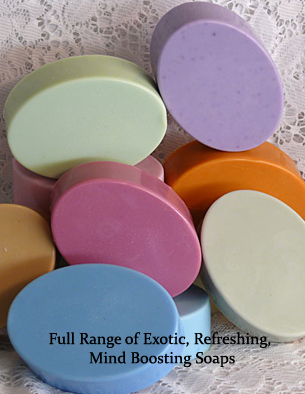
Soap Is Simply Made, Though The Chemical Reaction Is Complex. Chemically, An Acid (The Fats And Oils) And A Base (A Solution Of Sodium Hydroxide And Water, Also Called Lye) React To Produce Soap And Glycerin. The Process Is Called Saponification, And As The Fats And Oils And The Lye Solution Come Into Contact With One Another And React, They Are Saponifying, Or Making Soap.
The Mixture Gradually Changes From A Separated Mixture Of Heavier, Watery Lye And Lighter Fats And Oils To A Thicker, Uniform Mixture. The Soap Mixture Is Ready To Be Poured (For Most Recipes) When It Has Thickened To The Point When A Bit Of Soap Drizzled From The Spatula Onto The Surface Of The Soap Leaves A Trail (A Pattern) For A Moment Before Disappearing Beneath The Surface. This State Of Readiness Is Known As A “Trace,” Since Only A Trace Of The Pattern Remains When The Soap Is Ready. An Ingredient That Is To Be Added “At The Trace” Is Not Incorporated Into The Soap Pan Until The Trailings Are Recognized As Such By The Soapmaker.
A Variety Of Acids And Bases And A Series Of Processes Produce Soap, But Homemade Bars Are Made Using Easily Accessible Materials And A Simple Process Called The Cold-Process — Once The Sodium Hydroxide Solution Is Added To The Melted Fats And Oils, No External Heat Is Required To Keep The Soapmaking Reaction Going. The Heat Of The Ingredients Is Plenty To Drive The Reaction To Completion. “Cold” Does Not Mean Cold; It Was Coined As A Relative Term, Comparing It To The More Common Hot Soapmaking Temperatures Produced When Heat Is Applied.
The Two Most Critical Chemical Components Of The Soapmaking Process Are Contact And Heat. The Acid And The Base Must First Come Together Before They Can React; Heat Encourages Movement And Fluidity, And Stirring Ensures It. Soap Is Ready To Pour Once The Ingredients Have Been Evenly Dispersed In A Thick, Stable Emulsion. Further Reaction Can Take Place Later Provided That The Acid And The Base Are Positioned Closely Enough To Connect And React.
The Mixture Gradually Changes From A Separated Mixture Of Heavier, Watery Lye And Lighter Fats And Oils To A Thicker, Uniform Mixture. The Soap Mixture Is Ready To Be Poured (For Most Recipes) When It Has Thickened To The Point When A Bit Of Soap Drizzled From The Spatula Onto The Surface Of The Soap Leaves A Trail (A Pattern) For A Moment Before Disappearing Beneath The Surface. This State Of Readiness Is Known As A “Trace,” Since Only A Trace Of The Pattern Remains When The Soap Is Ready. An Ingredient That Is To Be Added “At The Trace” Is Not Incorporated Into The Soap Pan Until The Trailings Are Recognized As Such By The Soapmaker.
A Variety Of Acids And Bases And A Series Of Processes Produce Soap, But Homemade Bars Are Made Using Easily Accessible Materials And A Simple Process Called The Cold-Process — Once The Sodium Hydroxide Solution Is Added To The Melted Fats And Oils, No External Heat Is Required To Keep The Soapmaking Reaction Going. The Heat Of The Ingredients Is Plenty To Drive The Reaction To Completion. “Cold” Does Not Mean Cold; It Was Coined As A Relative Term, Comparing It To The More Common Hot Soapmaking Temperatures Produced When Heat Is Applied.
The Two Most Critical Chemical Components Of The Soapmaking Process Are Contact And Heat. The Acid And The Base Must First Come Together Before They Can React; Heat Encourages Movement And Fluidity, And Stirring Ensures It. Soap Is Ready To Pour Once The Ingredients Have Been Evenly Dispersed In A Thick, Stable Emulsion. Further Reaction Can Take Place Later Provided That The Acid And The Base Are Positioned Closely Enough To Connect And React.

